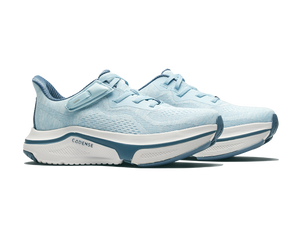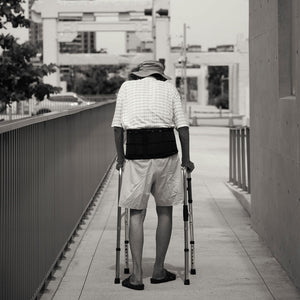Cart
Your cart is empty
Looks like you haven’t added anything yet, browse new arrivals below!
Continue ShoppingSurviving and Thriving After a Stroke
Gentle, adaptive footwear engineered to support balance, stability, and natural movement—designed specifically for the mobility challenges many individuals face after a stroke.

Medically reviewed by:
Dr. Obianuju Helen Okoye, MD


“I noticed a big improvement in my walking after 5 weeks of training.”

“Wearing them I don't feel nervous about my ankle rolling in, which is always my biggest concern.”

“With these shoes, every step is fully supported.”

Walking after a stroke can feel uncertain. Stroke-related changes such as muscle weakness, poor coordination, altered sensation, or balance issues may make everyday movement more physically demanding. The right footwear can play a meaningful role in recovery by helping reduce stumbles, improve gait mechanics, and increase confidence while walking.
Cadense adaptive shoes are clinically aligned to help support stroke survivors with features that promote safety, smoother steps, and improved stability throughout the recovery journey.
A stroke disrupts communication between the brain and body, often affecting muscles, balance, and coordination. This directly impacts walking, making daily activities more challenging.
Stroke survivors often benefit from footwear that enhances both safety and comfort. Look for:
Cadense footwear incorporates these features to help stroke survivors walk more confidently during recovery.

Explore adaptive footwear designed to support gait recovery, reduce fall risk, and promote greater independence for stroke survivors.
Yes — adaptive shoes can help stroke survivors walk more safely by supporting balance, stability, and smoother gait mechanics. Features such as lightweight construction, slip-resistant soles, and adjustable fit make them well-suited for post-stroke mobility challenges.
Some can, depending on the shoe’s depth, stability, and width. However, adaptive shoes are typically more comfortable because they offer adjustable fit, wide toe boxes, and predictable traction—important features for stroke survivors using orthotics or AFOs.
Every 3–6 months, or sooner if swelling, muscle tone, or brace needs change. Proper fit is essential for stability and preventing skin irritation or pressure points.
Many individuals regain walking function within the first 6 months, while others may continue improving for much longer. Proper footwear, therapy, and assistive tools can support safer, more confident recovery.
The best shoes are lightweight, supportive, and stable, with adaptive fit and slip-resistant traction. These features help stroke survivors manage balance changes, uneven gait patterns, and foot drop.
They can help reduce stumbling and improve walking safety by providing better grip and controlled glide. For more pronounced foot drop, supportive footwear may work alongside an AFO or brace.
Often, yes. Swelling, muscle tone changes, and brace use may require wide or adjustable-fit footwear for comfort and stability.
Regular athletic shoes focus on cushioning and performance. Adaptive shoes are engineered specifically for neurological walking challenges—providing stability, controlled transitions, and more supportive fit.
Yes — slip resistance is important because many stroke survivors experience balance issues, dizziness, or difficulty shifting weight. Good traction helps reduce fall risk on smooth or unpredictable surfaces.
Absolutely. Shoes that reduce tripping, improve traction, and support a more natural gait can significantly improve walking confidence and reduce fear of falling.
Many stroke survivors successfully pair their AFO with Cadense shoes thanks to the adjustable fit and roomy toe box. Fit can vary depending on brace style, so individual testing is recommended.
Some may benefit from different traction needs indoors versus outdoors. Cadense shoes are designed to provide stability and controlled movement across both environments without requiring separate pairs.
Looks like you haven’t added anything yet, browse new arrivals below!
Continue Shopping